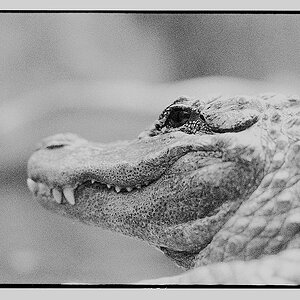wfooshee
No longer a newbie, moving up!
- Joined
- Oct 28, 2014
- Messages
- 846
- Reaction score
- 268
- Can others edit my Photos
- Photos OK to edit
Unchipped doesn't mean unmetered. It just means the camera and lens don't communicate electronically. The camera doesn't know the f-stop unless it has a non-CPU menu listing and reads the aperture ring (which my D7000 has - it knows when I've mounted my 85-1.8 and reads the aperture ring) and it doesn't know the distance being focused so there is no 3D zone metering. The camera can still measure light through it, and it would work in aperture-priority, just like the old Nikon cameras used.













